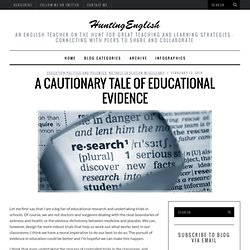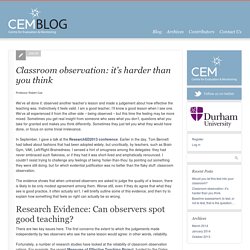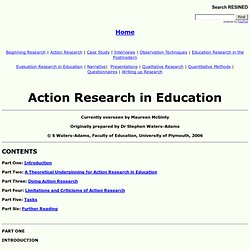

Correlation. Action Research. Action Research. LSIS Practitioner Research Programme 2012-13: Delivery model for embedding Functional Skills into a vocational course for Offender Learning. Tion Research Resources. A guide to carrying out and writing an action research report by Vron Leslie, WMCETT ITT Co-ordinator This short guide is written to help you approach the writing of a research report and our best advice is to start thinking about this as soon as you can and planning it into your work/life schedule.

The guidelines provide a general introduction to planning and writing a report but it is suggested that you read about writing research reports/dissertations before starting – see bibliography and our resources guide. We hope that you enjoy the experience of carrying out research and remember that your mentor/tutor is there to support you through the process. It might also help you to join a research action set of others writing their reports. The guide can be read here. Below, we have listed some other useful booklets and guides to action research, and right there are links to other types of resources.
Guide ‘Action Research: A Guide for Associate Lecturers’ published by the Open University. A Cautionary Tale of Educational Evidence. Let me first say that I am a big fan of educational research and undertaking trials in schools.

Of course, we are not doctors and surgeons dealing with the clear boundaries of sickness and health, or the obvious dichotomy between medicine and placebo. We can, however, design far more robust trials that help us work out what works best in our classrooms. I think we have a moral imperative to do our best to do so. The pursuit of evidence in education could be better and I’m hopeful we can make this happen. I think that even undertaking the process of controlled trials in the classroom, and attempting to isolate one variable in a fistful of complex variables, has value regardless of the results and we learn much from the process.
I have helped design and undertake a small matched trial in our English department last year – see here – and the process and the findings were fascinating. Only this evening I had a cautionary experience with the ‘evidence’. What are we as teachers to think? Classroom observation: it’s harder than you think - CEM Blog - Centre for Evaluation and Monitoring. Professor Robert Coe We’ve all done it: observed another teacher’s lesson and made a judgement about how effective the teaching was.

Instinctively it feels valid. I am a good teacher; I’ll know a good lesson when I see one. We’ve all experienced it from the other side – being observed – but this time the feeling may be more mixed. Sometimes you get real insight from someone who sees what you don’t, questions what you take for granted and makes you think differently. It's the effect size, stupid: what effect size is and why it is important. It's the Effect Size, StupidWhat effect size is and why it is important Robert CoeSchool of Education, University of Durham, email r.j.coe@dur.ac.uk Paper presented at the Annual Conference of the British Educational Research Association, University of Exeter, England, 12-14 September 2002 Abstract Effect size is a simple way of quantifying the difference between two groups that has many advantages over the use of tests of statistical significance alone.

Effect size emphasises the size of the difference rather than confounding this with sample size. 'Effect size' is simply a way of quantifying the size of the difference between two groups. The routine use of effect sizes, however, has generally been limited to meta-analysis - for combining and comparing estimates from different studies - and is all too rare in original reports of educational research (Keselman et al., 1998). 1.
The average score was 15.2 for the morning group, 17.9 for the afternoon group: a difference of 2.7. (a) (b) 2. The Cult of Outstanding™: the problem with ‘outstanding’ lessons. First of all I need to come clean.

Up until pretty recently I was a fully paid up member of the Cult of Outstanding™. Last January I considered myself to be a teacher at the height of my powers. In the spirit of self-congratulation I posted a blog entitled Anatomy of an Outstanding Lesson in which I detailed a lesson which I confidently supposed was the apotheosis of great teaching, and stood back to receive plaudits. And indeed they were forthcoming. I was roundly congratulated and felt myself extraordinarily clever. Classroom observation: it’s harder than you think - CEM Blog - Centre for Evaluation and Monitoring.
Tion research: a guide for associate lecturers. Tion Research in Education. Search RESINED Home Beginning Research | Action Research | Case Study | Interviews | Observation Techniques | Education Research in the Postmodern Evaluation Research in Education | Narrative| Presentations | Qualitative Research | Quantitative Methods | Questionnaires | Writing up Research Action Research in Education Currently overseen by Maureen McGinty Originally prepared by Dr Stephen Waters-Adams © S Waters-Adams, Faculty of Education, University of Plymouth, 2006 Part One: Introduction.

What Is Action Research?